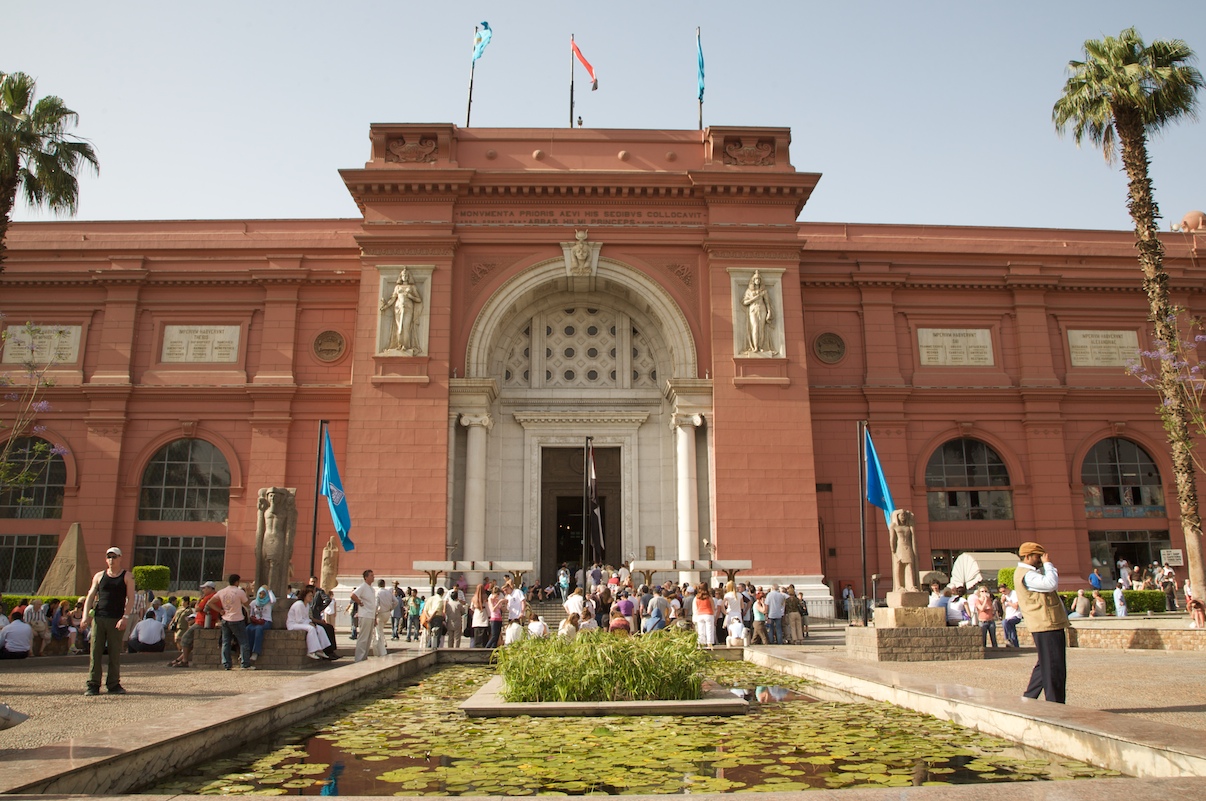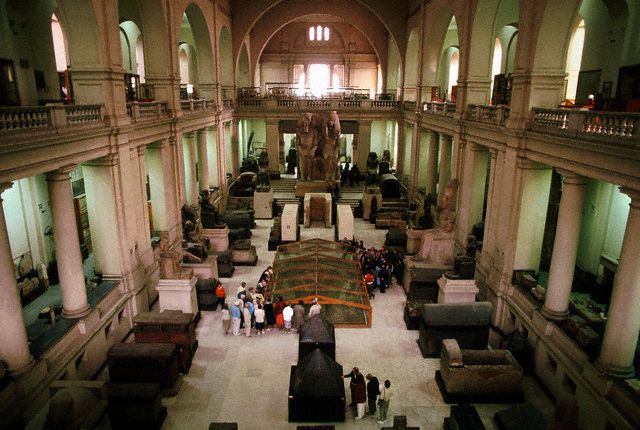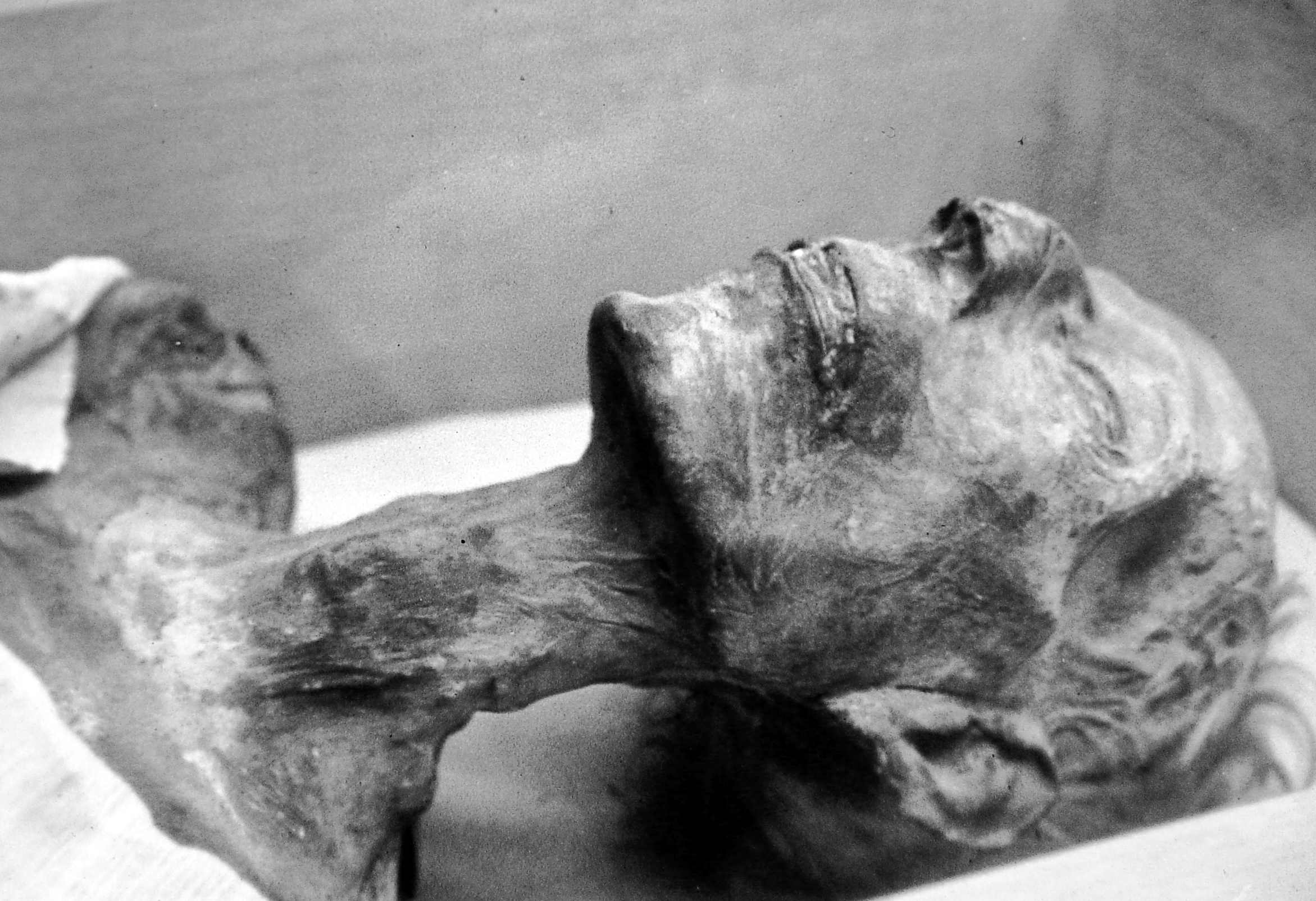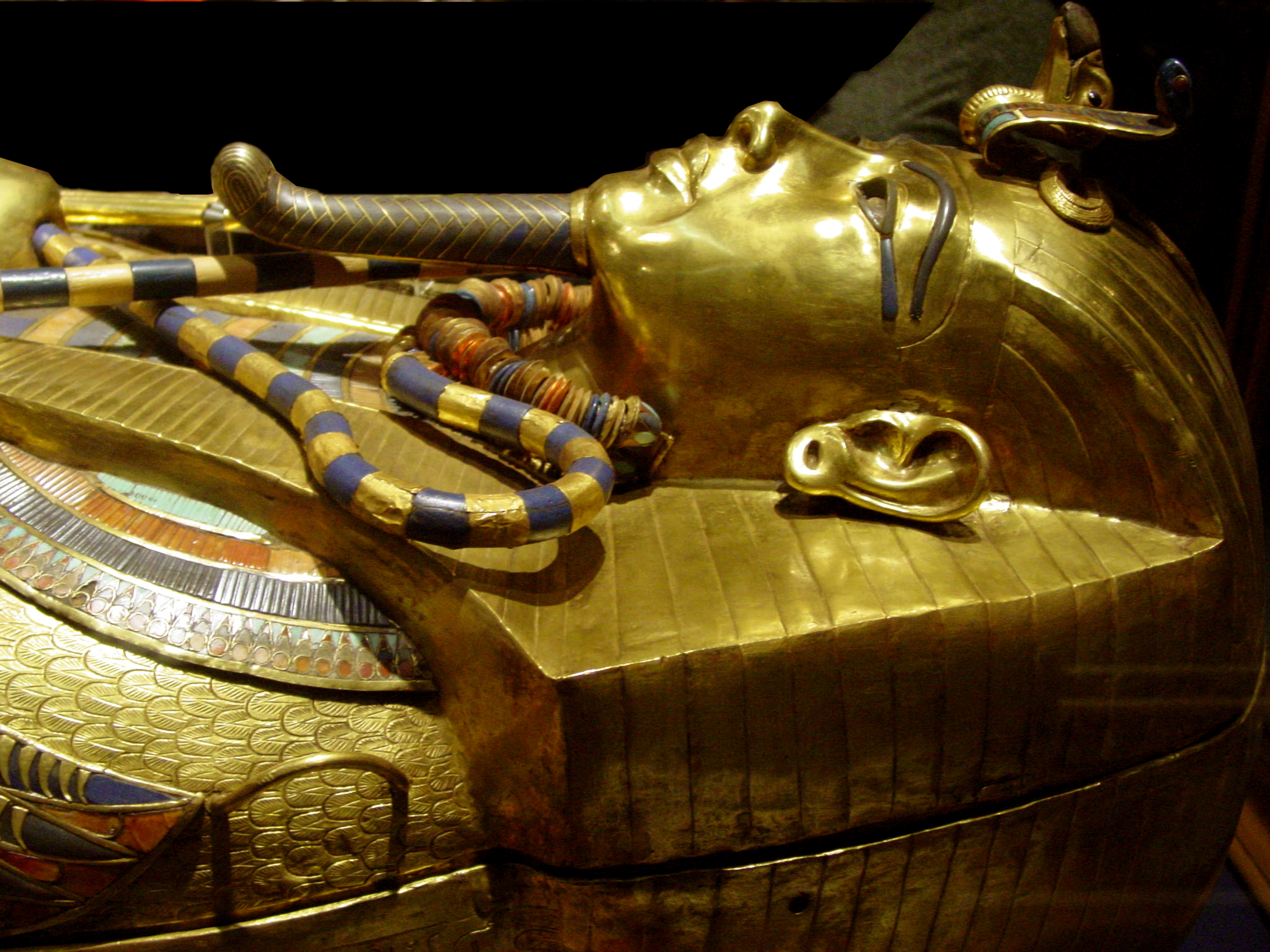The Egyptian Museum
image by colmdc
Back in the van, we made a short stop for Nibal to pick up falafel and drinks at a local shop. We ate as we headed back toward Cairo. It was really the first meal I'd had since being so sick between flights the day before. I don't know if it was my hunger or the food, but it was amazingly delicious.
image by alanosaur
Avoiding Tahrir Square, we arrived at the Egyptian Museum. We chose to leave our cameras with our driver instead of checking them inside the gate (thus the flickr photos borrowed for the post). The pink facade was prettier in person than in pictures. We headed inside, stopping by the bust of Champollion and the copy of the Rosetta Stone. The Palette of Narmer was next, which made me smile - it was the very first thing we studied in Art History 101. Other highlights included the Seated Scribe, Akhenaten's Gilded Sarcophagus, and a 17 ft crocodile mummy.
image by international70
We saved the Royal Mummies and Tutankhamun's collection for last. The mummies had me intrigued - one, I had wanted to be an Egyptologist when I was little, and mummies were the main reason why. I didn't find them gross or scary. I found - and still find - them to be fascinating. The idea that you're looking at the relatively well-preserved body of a person from 3,000 years ago, a person whose name and deeds are still known today, is pretty awesome to me. The second reason the mummies had me intrigued was the element of surprise. In all my scouring the internet for info before we left, I hadn't managed to find a list of the royal mummies currently on display. So as we walked around the small, dim, peaceful room, I jotted one down.
1) Seqenenre Tao II - 17th Dynasty, pretty grim looking - he was killed in battle, and his lips are pulled back, revealing what looks like a death grimace.
2) Queen Ahmose Meritamun - 18th Dyn., still wrapped, with a garland of dried flowers or leaves around her neck.
3) Amenhotep I - 18th Dyn., also wrapped and with a garland.
4) Tuthmosis I (?) - 18th Dyn., a gorgeous mummy, but sadly, probably not actually the Pharaoh. He's too young and his arms are in the wrong position.
5) Tuthmosis II - 18th Dyn., teeth showing in what almost looks like a smile.
6) Queen Hatshepsut - 18th Dyn., much smaller and prettier than pictures would have you believe.
7) Tuthmosis III - 18th Dyn., like his father, has a kind of goofy smile (totally for getting one over on his wicked step-mother). Missing his nose though.
8) Rameses II - 19th Dyn., the old man of the bunch (seen below). One of the four or so Pharaohs people seem to be sure is *the* Pharaoh of the Exodus. Honestly, he ruled so long and built such an empire, I'm not sure why people get hung up on the supposed biblical connection. Beautifully preserved, right down to his hair.
9) King Merenptah - 18th dynasty, has a sad old man face.
10) Amenhotep II - 18th Dyn., another one with hair. Has some sort of rash or scarring on his face and neck.
11) Tuthmosis IV - 18th Dyn., my favorite mummy. Has hair, and a nice peaceful expression. This was the Pharaoh who restored the Sphinx.
12) Seti I - 19th Dyn., the best preserved of the lot. Very regal in appearance.

Each unwrapped mummy is covered to his or her neck with a sheet for purposes of modesty or respect. I think I remember reading that this was one of the conditions when the room reopened in the 90s. All the mummies, even Hatshepsut and Seti I, who both seem to have some heft in photographs, were tiny.
After the mummies, we headed over to Tutankhamun's collection, which occupies much of the second floor. I found it interesting that both of our Egyptian guides referred to him, repeatedly, as "The Boy King", instead of by his name. The sheer amount of *stuff* in King Tut's collection was amazing - chairs, walking sticks, beds, games, shoes, gloves, jewelry. The giant golden shrines that held Tut's sarcophagus were especially mind-boggling, in size and splendor. Finally, we went into the room that holds his golden coffins and mask. The mask was incredible, but I feel like you see its image reproduced so often that it loses a little of the impact. However, it was neat to be able to walk around it, to see the less-photographed back and the necklace that originally hung around the front of the mask as well. The coffins were amazing - I prefered the solid gold while Lis liked the intricate designs on the inlaid one.
image by tutincommon
Later it occured to me that it had been like visiting a museum of a museum - little has changed since it opened in 1902. Lis was appalled at the lack of security - as she said, The Mona Lisa in Paris seems to have more measures to protect it than the entire contents of the Egyptian Museum. Nibal agreed, but also said that the majority of the Egyptian people have enough pride in their heritage that they act as the security. When Mubarak's party building was set aflame during the revolution, Nibal said she wanted to come down to the museum and protect it with other Egyptians, but didn't, as she had to think of her safety as a wife and mother. On our way out, we passed the burnt out NDP headquarters. It will remain, for the time being, as a monument to the revolution.
image by OsamaSaeedDotOrg






Comments
Post a Comment